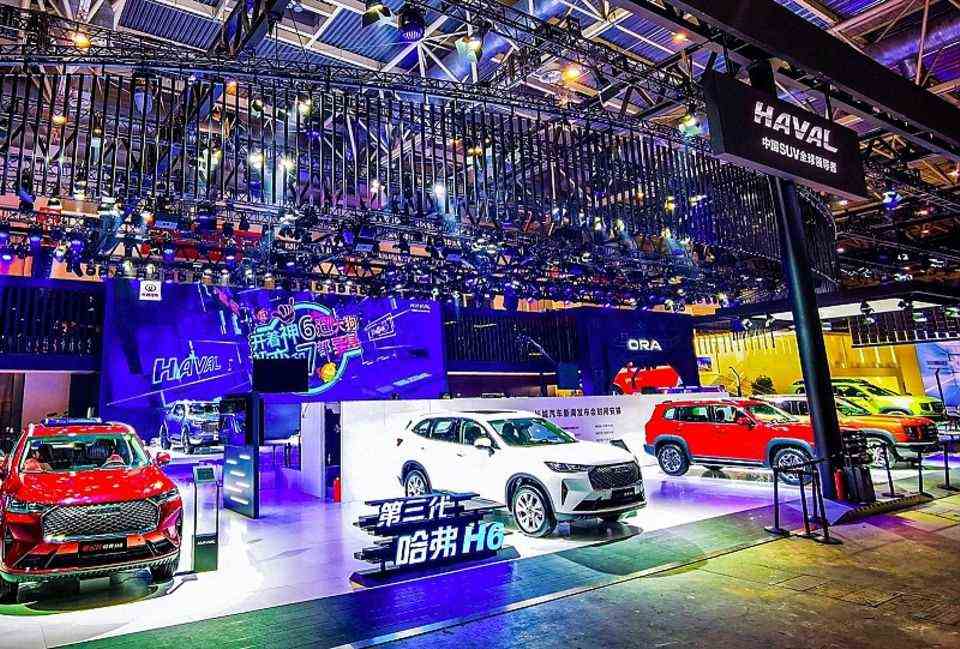China electrical market – a role model for Europe?
The next level
Auto China 2020
© press-inform – the press office
After the trend towards electric cars in China has been strongly pushed, the government there is now taking the next step – with significantly reduced subsidies. A role model for Europe?
The tactics in China were the same as here in Europe. With generous grants and lavish tax breaks, Chinese customers were pushed onto the electric road. The demand for electric cars and plug-in hybrids picked up and so the Chinese government gradually reduced the subsidies for customers. According to analysts at Global Data, the world’s largest auto market wants to replace its current system of green vehicle credits with a new policy that largely focuses on reducing carbon emissions. These changes are intended to help China achieve the requirements of the Paris Climate Agreement and the goal of CO2 neutrality by 2060.
The current system of so-called Green Car Credit or NEV Credits is a credit-based mechanism that will be active until 2023 and in which car manufacturers are credited with points for the sale of electric vehicles or fuel-efficient vehicles. The credits can be traded through certificates with other companies to generate additional revenue, to offset any deficits in Corporate Average Fuel Consumption (CAFC) or to reduce penalties for more carbon-intensive models. “The policy aims to replace the multiple regional incentives with a unified nationwide policy that encourages automakers to achieve carbon neutrality by selling electric vehicles,” said Bakar Sadik Agwan, senior automotive analyst at Global Data, “even if If the intentions were right and aimed at the overall goal of carbon neutrality, there have been a number of challenges and shortcomings. Existing credit policies have led many manufacturers to prefer electric vehicle production to internal combustion engine production, but the industry is now struggling with overcapacity and Market fragmentation worries the government. “
The situation in Europe is now similar to that in China. Because manufacturers are working flat out to get their electrified vehicles on the road as quickly as possible and to make the model portfolio as green as possible, significantly less money has been flowing into the development of modern combustion engines for years. Some manufacturers said goodbye almost completely to the further development of efficient diesel units, which are celebrating a resurrection in the USA, especially with large pick-ups and SUVs. However, the fuel consumption improvement for vehicles with internal combustion engines has declined noticeably in China since 2018, as the weak CAFC performance was offset by a stronger focus on EV production.
“The new Chinese emissions trading system is similar to the EU’s emissions trading system, which is based on the ‘cap-and-trade’ principle, which sets an upper limit for the allowable emissions in automobile production, which is reduced over time,” explains Bakar Sadik Agwan, “within this upper limit, manufacturers can buy emission certificates that can be traded with other manufacturers if necessary. The ETS would ensure the control of emissions in the entire – very energy-intensive – automobile production.” Because the vehicles themselves are not the only problem. Numerous car manufacturers have now committed to becoming completely climate neutral in the next 20 years. Daimler, for example, wants to make its own new vehicle fleet CO2 neutral by 2039. “In the long term, the value chain should develop into a value chain,” says Daimler Group Board Member Ola Källenius. The Swabian premium manufacturer plans to make vehicle production in its European plants CO2-neutral as early as next year. Without a green climate seal, you won’t even have to try Daimler tenders in the future.
“In implementing our long-term goal of climate neutrality, we not only consistently electrify our product range, but also in the supply chain: For the next generation of vehicles from our EQ product and technology brand, some of the battery cells are to be produced 100 percent with electricity from renewable energies.” , explains Markus Schäfer, Head of Development and Purchasing. Volvo aims to reduce Co2 emissions in the supply chain by at least a quarter by 2025. These are the same requirements as for your own company.
Existing star plants will be converted to be CO2-neutral; new factories such as Factory 56 in Sindelfingen are being built according to the specifications anyway. For example, on the roof of the most modern Daimler factory there is a high-tech photovoltaic system that feeds 5,000 MWh of self-generated green electricity into the factory every year. “With the CO2-neutral production in our European car plants, we are making a decisive contribution to the achievement of the sustainability goals of our company. Factory 56 serves as a blueprint for our future plants – not only in terms of the most modern production technologies, but also in terms of environmental protection , Resource conservation and sustainability, “explains Jörg Burzer, Board Member for Production at Daimler. Other automakers are moving in a similar direction. In China as well as in Europe.


